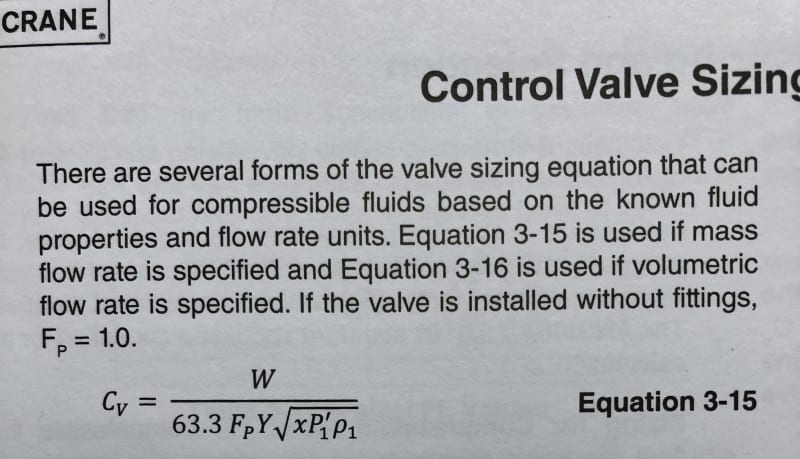I have to provide 95 psig nitrogen gas to a LN2 dewar switching manifold as the pneumatic actuation gas for the valves that are part of the manifold. The vendor that is supplying this manifold has recommended a high pressure gaseous nitrogen cylinder (size 300) as the nitrogen source since the building doesn't have a nitrogen utility. The cylinder is at 2640 psig when full and a two stage regulator is used to reduce the pressure to 95 psig. I have to follow a standard which requires a relief valve downstream of regulators in the case of the regulator failing open. My question is if the ISA standard equation for determining failure flow rates applies in this situation or does the magnitude of pressure in the cylinder make that equation inaccurate?
ISA equation I am referencing:

ISA equation I am referencing:



